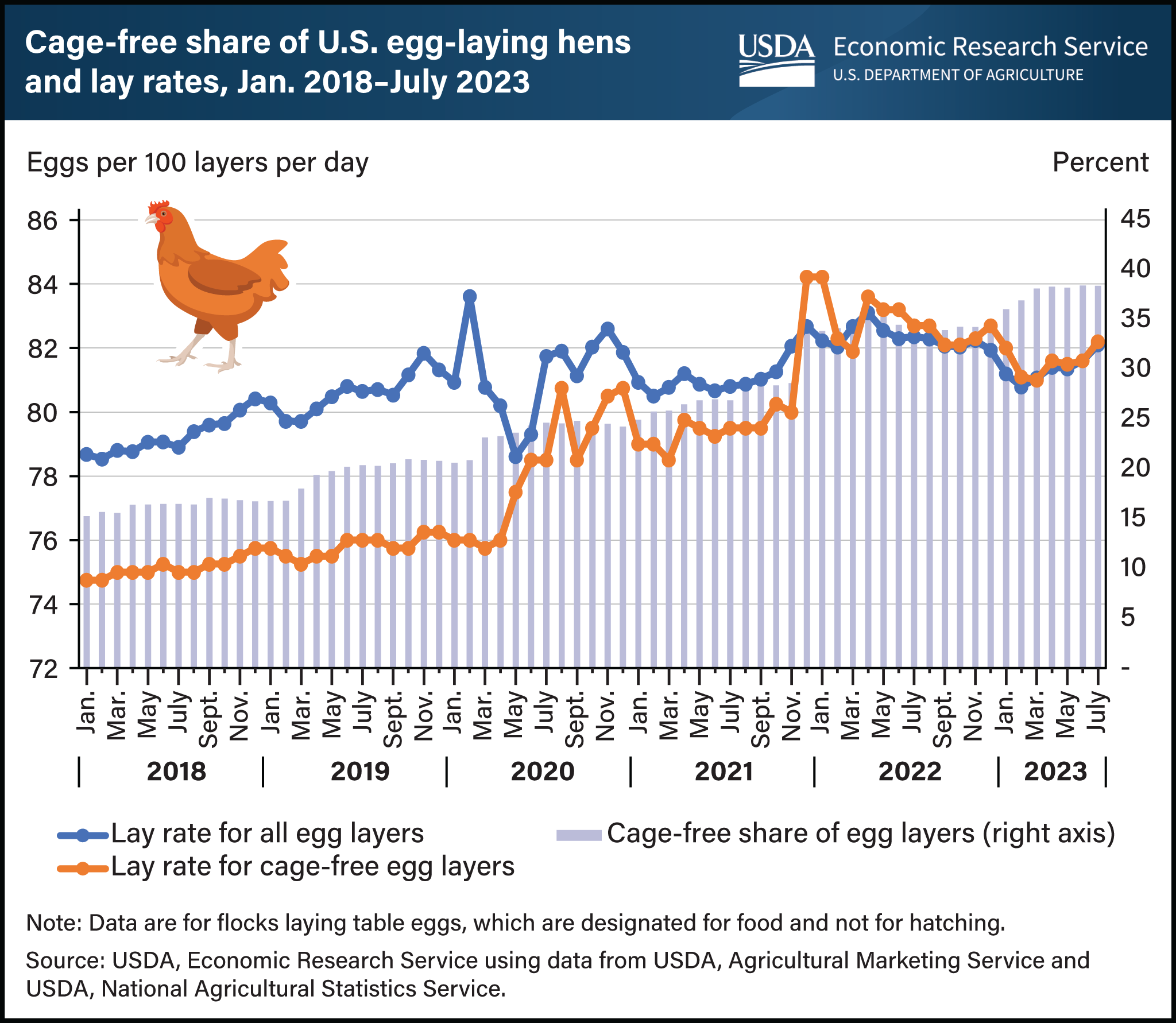Growing share of egg-laying hens are cage-free
- by Adriana Valcu-Lisman and Grace Grossen
- 10/11/2023

Cage-free hens, which unlike caged hens are free to roam during the laying cycle, comprise a growing percentage of the U.S. egg-laying flock. The cage-free flock has grown as States have passed and enacted legislation banning confinement of hens and as multiple retailers and food service providers have pledged to only source eggs from cage-free operations. Additional State bans are planned to take effect between 2023 and 2026. According to the USDA, Monthly Cage-Free Shell Egg report, the cage-free egg-laying flock (including certified organic hens) increased by more than 10.5 million hens in the first 6 months of 2023. As a result, cage-free hens increased as a proportion of the total U.S. laying flock, expanding from 36 percent in January to 38 percent in June. A closer look at USDA’s data reveals that the nonorganic cage-free flock accounted for most of this increase, while the organic egg-laying flock accounted for a smaller share of growth. The same report estimates cage-free hens’ productivity. Starting in late 2021, cage-free lay rates have been moving mostly above or at similar levels to the lay rates in the overall table egg-laying flock, a departure from the previous trend. This chart is drawn from the USDA, Economic Research Service’s Livestock, Dairy and Poultry Outlook, August 2023.

